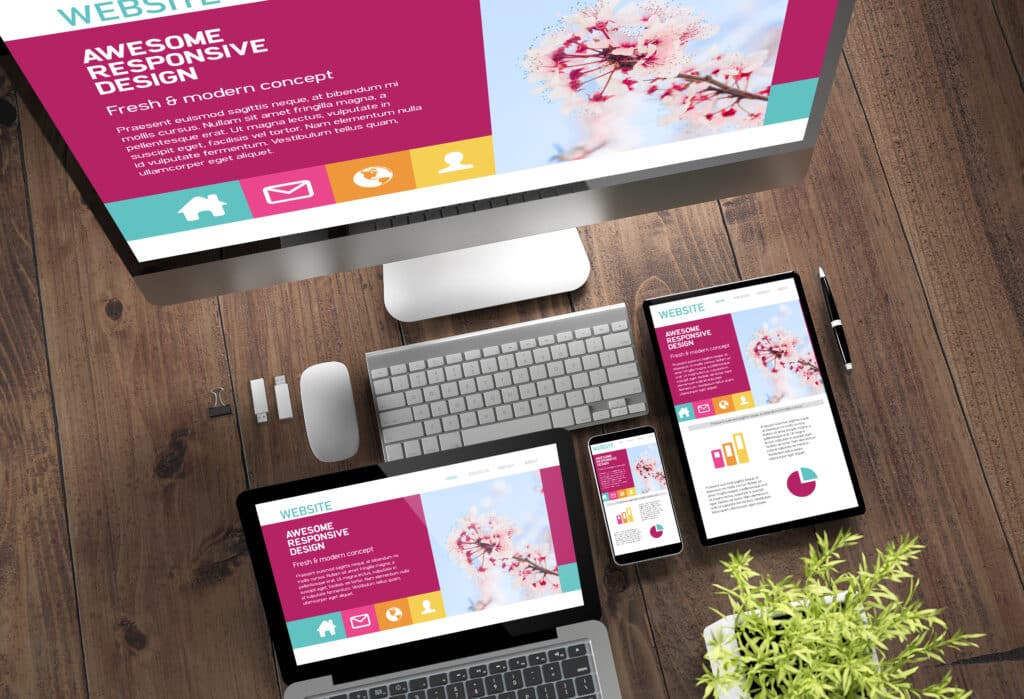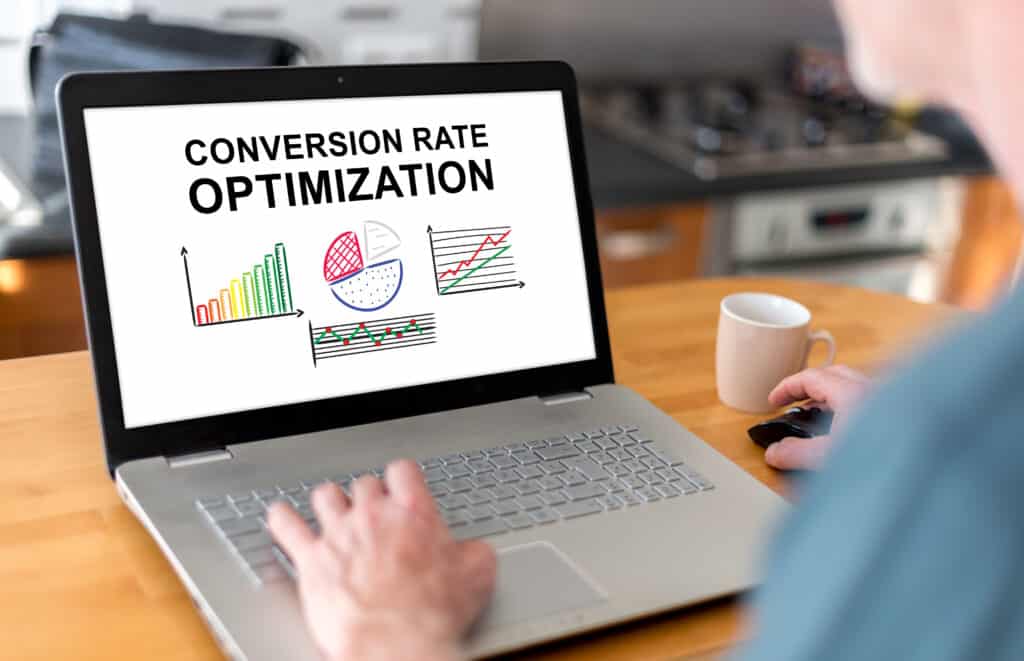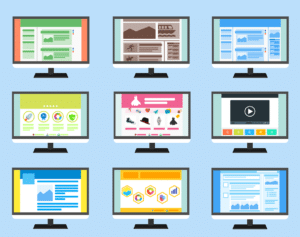With so much space on your website, you may think it is essential that you fill as much of it as possible. But, when considering an update, it is important to consider white space in web design.
This design concept is incredibly beneficial to business owners, but the idea of leaving spaces empty may seem daunting. At Performance Driven Marketing, we want you to understand why using white space in web design works better for your business than overfilling a page with content.

What Is White Space?
White space in web design, sometimes called negative space, refers to the blank spaces intentionally left content-free on a webpage. The term comes from the printing industry, where white space was used to describe any part of a printed page that doesn’t feature content.
In web design, white space includes margins, gutters, line height, spacing, and more on your website, and can be horizontal and vertical. As the 20th century began, the use of white space became much more popular, and soon web designers were utilizing white space in web design.
What Are The Benefits Of Using White Space In Web Design?
While white space in web design is intentionally unseen by users, it is incredibly important for user experience on your webpage. The benefits of using white space in web design include the following:
Improve Readability
The content on your website is useless if your users aren’t reading it. When utilizing white space, content won’t feel overwhelming or crowded, and you guarantee that content is much easier for users to skim through. This skimming of content means users are consuming more of your content than they would if you didn’t utilize white space in web design.
Focus Users’ Attention
When using white space, you have more control over where your users focus their attention. This white space draws your attention to headlines or important information for your users. If you’re trying to emphasize something especially important, white space is the perfect way to do that.
Create A Clean Aesthetic
Minimalism has become increasingly popular in home design. But this popularity doesn’t end there. It has also become a popular design concept for websites. By utilizing white space, you can create a clean web aesthetic that is visually appealing to many diverse audiences.
Visual Hierarchy
When using white space, you create a visual hierarchy for your users. Visual hierarchy is the path a user’s eye follows as they read through content. By properly utilizing white space, you ensure your webpage isn’t too cluttered or difficult to navigate.
Increase Call-To-Action

As we mentioned above, using white space can improve your user’s focus. This improved focus can be incredibly helpful if you are trying to improve call-to-actions (CTAs) on your webpage. Whether you’re trying to get users to schedule appointments, buy products, or learn more about your brand, white space can greatly increase your CTAs.
White Space Best Practices
No matter how you choose to use white space in web design, it is important that you follow best practices for it to be most effective for your mission. Below are a few best practices when incorporating white space into your website.
Maintain Web Margins
Nothing creates better harmony on your webpage than consistency. Without consistent margins on your web page, content may look cluttered, disorienting, and less polished. With white space in web design, ensure spacing between sections on each page is consistent. It unites your web pages and ensures content is easily readable. If you want your website to feel cohesive, make sure you’re maintaining margins.
Consider Mobile Users
With the internet available through most mobile devices on the market, it is important to think about mobile users when using white space in web design. White space on your phone may look vastly different on this smaller screen and make content overwhelming. Take your time and understand that you may need to adjust how content is displayed for white space to benefit your mobile website.
Create Symmetry
Symmetry is incredibly effective when used with white space in web design. It makes navigation of the site much easier for users, as their eyes will often follow the most logical arrangement of content. Using symmetry with white space ensures your user’s eye is pulled towards the most important information displayed on the page, which can, as we mentioned above, improve call-to-actions for your website.
Don’t Overdo It
While using white space in web design is incredibly beneficial for business owners, you must not overuse it. During the design process, ask yourself if your page looks too empty. If it does, you’re probably overutilizing white space. Your use of white space should enhance the content on your page but shouldn’t leave it looking sparse. If you’re struggling to decide if there is too much white space, seek a second opinion. Fresh eyes may help you see something you otherwise might miss.

Unique Web Design For You Business With Performance Driven Marketing
At Performance Driven Marketing, our expert graphic designers and web developers understand the importance of white space on your website. If you are looking for a unique web design that perfectly encapsulates your brand or would like to learn more about how our other services can benefit your business, contact us today.

 Marketing is shifting more and more online. When you want to know about restaurants or businesses nearby, you turn to search engines. When you want to check the reputability of a business or a product, you look up online reviews and ratings. When you want to see what services a business offers, you want to be able to click through their website and have all the information you need at your fingertips.
Marketing is shifting more and more online. When you want to know about restaurants or businesses nearby, you turn to search engines. When you want to check the reputability of a business or a product, you look up online reviews and ratings. When you want to see what services a business offers, you want to be able to click through their website and have all the information you need at your fingertips. 






